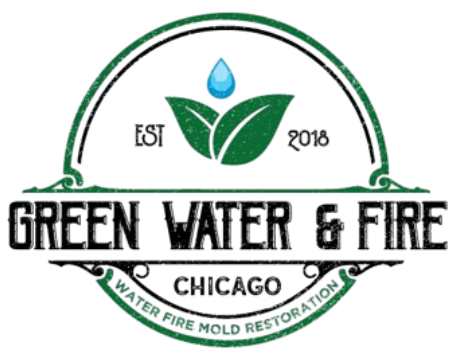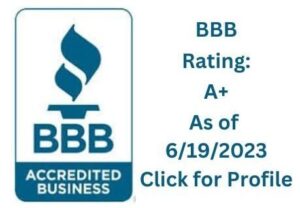Sewer backup in the basement is one of the worst and most disgusting problems that a homeowner can encounter. They’re not just a threat to your things and home; they’re a serious health hazard because raw sewage contains harmful bacteria, viruses, and pathogens. If not remediated, sewage backups can lead to ongoing water damage, moldy walls, and foul smells that are almost impossible to remove. This guide has all the answers for cleaning sewer backup in the basement, when to call in professional help, and how to avoid it happening again.
Understanding Sewer Backup in Basements

Basement sewer backups are more than just a messy inconvenience. They are a dangerous hazard that can harm your home, compromise indoor air quality, and put your health at risk. Knowing how and why they occur is the first step in preventing expensive repairs and long-term problems.
What Is Sewer Backup and How Does It Affect Your Basement?
What is a sewer backup? A sewer backup happens when wastewater from your house or a public sewer line reverses its course and comes back up into your home’s pipes, commonly coming through basement drains, though also sometimes from toilets or sinks. This polluted water can contain human refuse, chemicals and dangerous bacteria, representing immediate health hazards and structural damage.
Basements, situated at below ground level, are particularly susceptible to backflow, thanks to gravity when there’s a clog or a heavy rainstorm. If left untreated, it can be the real cause of ruined flooring, drywall, furniture and an environment that serves as the perfect breeding ground for mold and bacteria.
Common Causes of Sewer Backup in Basements
Many factors play a role in a sewer backup in your basement. Knowing when what they are caused by makes it easier to take preventive action:
- Old or broken sewer lines infiltrated by tree roots
- Blocked or collapsed main sewer lines due to grease, debris, or non-flushable items
- Heavy rainfall or flooding that overwhelms municipal systems
- Aging plumbing systems, particularly in older homes with clay or cast iron pipes
- Improper drainage connections or lack of backwater valves
- Septic system failures due to overuse, lack of maintenance, or age
These causes commonly act together, particularly in high-risk areas, or during periods of severe weather.
Dangers of Septic Tank Overflow and Sewer Backup
If a septic tank gets full or malfunctions, raw sewage can end up in the home or spewing into the yard. This isn’t just some unpleasant smell, it’s a biohazard. Septic overflows and sewer backups discharge harmful microorganisms that can lead to infections, respiratory issues, or skin reactions.
Furthermore, when the soil around the septic tank is waterlogged, it can cause environmental pollution such as contaminated ground water and wells in the area. For basements, sewage scan weaken the foundation, rot building framing or destroy insulation, walls and possessions, so dealing with septic overflow cleanup is a task that will require both cautiousness and completeness.
Immediate Actions to Take When Sewer Backs Up in Basement
When the sewer backs up in your basement, it’s important to take action immediately to minimize damage and health risks. The first 48 hours are pivotal in terms of safety and not driving up the contamination of your property. Moreover, having a specific plan can help minimize potential damage and the spread of contaminated water.
What to Do If Sewer Backs Up in Basement
If you do find a sewer backup in the basement, take immediate action to stem the damage.
- Summer camp staff members can lead by refusing to let campers enter contaminated water and imperil themselves against dangerous bacteria.
- Shut off power to the affected area to reduce the risk of electrical hazards if water has infiltrated outlets or appliances.
- Then, see how far the back-up goes, trap that part (if you can) to stop it from coming in.
- Do not use your plumbing system until you are able to address the backed-up water, to avoid additional overflow or contamination.
How to Safely Approach a Sewage Backup in Your Basement
If you have a flooded basement with a sewage backup, it is important to take proper safety measures:
- Protective Clothing: Use rubber gloves, boots, goggles, and mask to avoid contact with sewage or airborne carcinogens.
- Ventilation: You may use fans or open windows to accelerate the drying of the area and limit exposure to mold or bacteria.
- Avoid Electrical Hazards: If outlets or wires have touched water,shut off the power at the breaker box right away. Never try to deal with electricity if the floor is wet.
- Keep a Distance: Do not touch a surface that is barehanded, and keep pets and children away from the area to avoid exposure to dangerous pathogens.
Identifying the Source of the Sewer Backup in Basement
Before you can think about cleaning up, it’s important to know how the sewer backup began. Here are some common causes:
- Blocked drains or pipes such as by grease, tree roots or non flushable material
- Overloaded municipal sewer systems resulting from heavy rain or clogged city lines
- Cracks or breaks in your home’s sewer lines
- Septic tank problems that result in basement wastewater backup from below ground
Knowing the source can help you make the right next steps, whether that is addressing a problem with a local plumbing system or waiting for municipal workers to step in and fix a larger-scale problem.
Cleaning and Sanitizing After Sewer Backup
The next thing you should focus on is cleanup. The cleanup and sanitizing process for a toilet or sewer backup is not the same as regular water damage — there are biohazards, health risks, and deep disinfection involved. This step is crucial to make your basement suitable for living in again and to stop mold from growing, bad odors from sticking or further contamination.
Step-by-Step Guide to Cleaning Basement After Sewer Backup
Cleaning up a basement after a sewer backup is about a whole lot more than just mopping up the water. Here is a general outline of the main steps:
- Remove standing water and sewage
- Dispose of contaminated materials
- Wash all surfaces with warm water and soap to clean visible dirt
- Disinfect with an equally strong product, such as a bleach solution (1 cup of bleach to a gallon of water).
- Dry out space completely by ventilation and running fans and dehumidifiers to prevent mold.
- Check structural elements such as wood framing and subflooring for concealed damage
This procedure must be done carefully to prevent permanent injury or health problems.
How to Clean Up Raw Sewage in Basement

Any raw sewage is toxic and has to be treated with extreme caution. Here’s what you need to know to manage it safely:
- Wear protective gear all the time: rubber boots, gloves, safety goggles andmask
- Shovel solids out; vacuum liquid features
- Throw away contaminated items in heavy double trash bags
- Disinfect all hard surfaces with hot water and degreasing cleaner
- Use professional-grade cleaning formulas, specifically intended for biohazard clean-up
- Avoid Cross contamination is bad. Don’t use house or car cleaning tools for other purposes after using them during a sewage cleanup
In cases where the raw sewage contamination is widespread or the area needing cleanup is extensive, we do recommend that you would need to call a sewage remediation company to assist.
Biohazard and Sewage Cleaning Tips for Your Basement
Not only are sewage backups biohazard situations, but they also require professionals who have the training to properly clean and disinfect the affected area. Here are expert tips to follow:
- Clean up sewage ASAP — the longer sewage remains, the more contaminated it becomes
- Utilize antimicrobial applications on surfaces after cleaning to help prevent mold and bacteria growth
- Use air scrubbers or HEPA filters to reduce the risk of airborne contaminants during the clean-up process
- Photograph the damage for insurance claims before you start removing or making repairs.
- Do not install carpet in basements following flooding
- After drying, check the basement with a moisture meter for any remaining moisture.
With properly biohazard cleaning, your basement will not only look clean, but be safe to use for years to come.
Hiring a Professional for Sewer Backup Cleanup
Minor sewer backup issues can occasionally be remedied with do-it-yourself solutions, but most situations need a professional to fix the problem using the proper equipment. The safest and often most successful option is to hire a sewage cleanup service, particularly if you are dealing with raw sewage, extensive contamination, or if you don’t know the source of the contamination. Typical professional sewage cleanup cost is anywhere between $7 – $15 per square foot with total restoration costs averaging anywhere from $2,000 up to $10,000+ for more major issues. . Always request a detailed quote.
Conclusion
Dealing with sewer backup in the basement is never pleasant, but quick action and a simple response can manae long-term cleanup and damage control. From determining the source and removing contaminated water to sanitizing and preventing future problems, the process requires safety, perseverance, and attention to detail. If you’ve suffered a sewer flood or to avoid future problems, feel free to contact a licensed sewage clean up professional, Green Water & Fire.
FAQs
Turn off electricity in the affected area, do not used plumbing and keep children and pets out. Hire a professional cleaning service for severe contamination.
Only if the affected area is small, contained, and you have proper proactive gear. For raw sewage, or large spill, professional cleanup is highly recommended.
It’s hard to say without looking at the specifics, but most standard policies wouldn’t cover it. Although some provide optional coverage say, for sewer backups. Review your policy or speak with your insurer for specifics.


















